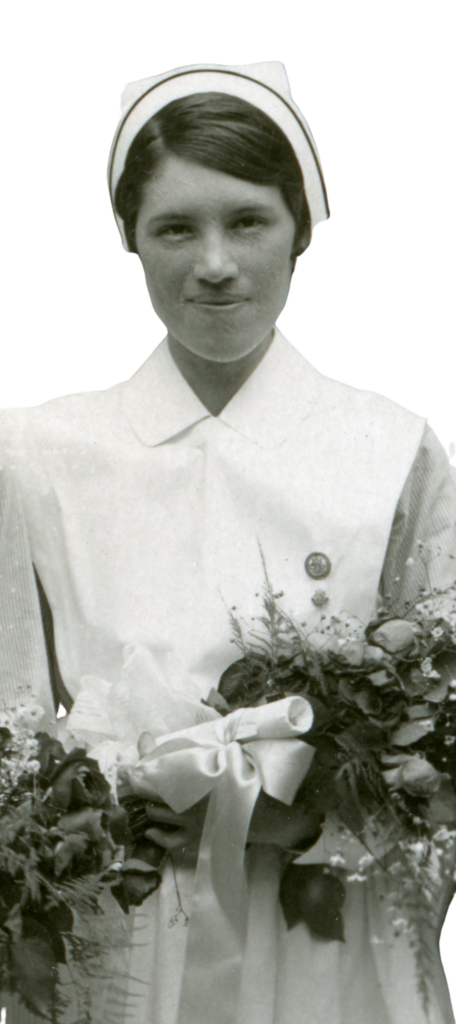By Heather Gardiner
In recognition of National Indigenous History Month, The Miss Margaret Robins Archives of Women’s College Hospital (WCH) is celebrating the life and nursing career of Beatrice Frances Quachigan, an early graduate of the WCH School of Nursing. As a young Indigenous woman growing up in Northern Ontario in the 1920s, Quachigan’s courage and determination enabled her to overcome many challenges and barriers throughout her early life to achieve her dream of becoming a nurse.

Beatrice Quachigan was born on January 11, 1911, to her parents Daniel and Christina, on the reserve lands of the Moose Cree First Nation in Moose Factory, Ontario. Beatrice was the oldest of the couple’s four daughters. In August 1917, Daniel Quachigan joined the Canadian Forestry Corps of the Canadian Army. It is estimated that over 4,000 Indigenous Peoples enlisted in the Canadian Military during World War One. As a member of the Forestry Corps, Private Quachigan served in England to help harvest timber to support of the war effort. Sadly, overseas he fell ill and died of pneumonia on December 31, 1917.
Tragedy struck again for Beatrice Quachigan a few months later when her mother and three younger sisters succumbed to tuberculosis in early 1918. With no other family to take care of her, Quachigan was sent to the Shingwauk Residential School in Sault Ste. Marie. She remained a student at the school until the end of the eighth grade and then she enrolled in Sault Ste. Marie Technical and Commercial High School. She, like many Indigenous students with no family in Sault Ste. Marie, continued to live at the residential school. Each day she made the long commute by bus into town to attend high school. Many Indigenous students who also made the same journey would later recall feeling isolated because they were unable to join afterschool clubs and sports teams like the other students.
After graduating from high school, Quachigan began applying to nursing schools. Although there were over two hundred hospital-based nursing programs operating throughout Canada, most Canadian nursing schools would not accept Indigenous students. As nursing historians point out “Indigenous women were largely barred from entering nurse training schools until the 1930s” in Canada. However, Quachigan was excited to learn that she was accepted into the WCH School of Nursing in the summer of 1930. It is unknown why she chose to apply to WCH; however, she could have been aware that WCH had been accepting Indigenous students into its nursing program since 1925.
Quachigan graduated with a nursing diploma in 1933 and was awarded the prize for practical nursing at the graduation ceremony. She began her nursing career at WCH and then continued to work as a nurse throughout Canada and the United States for the next forty-six years. She spent most of her nursing career at the War Memorial Hospital in Sault Ste. Marie, Michigan.
Shortly after her death on August 30, 1994, her family held a memorial service on the Piikani Reserve in Southern Alberta where she was married. Some of her ashes were sent to Moose Factory to be placed near her birthplace.
This National Indigenous History Month we share and celebrate the life and nursing career of Beatrice Quachigan. Her story illustrates some of the many barriers that Indigenous Peoples have historically faced in Canada. Quachigan overcame these challenges through her own courage and determination to achieve her dream of becoming a nurse. As an early Indigenous nurse in Canada, Quachigan was a trailblazer for Indigenous women in the nursing profession.